Attachment Wounds and Food Struggles Series | Introduction
Over the course of the last few months, I’ve explored enmeshment — a concept that refers to relationships with blurred boundaries and a lack of autonomy. More specifically, I took a close look at enmeshed parent-child relationships, where attachment wounds from childhood can show up as unwanted compulsive or restrictive behaviors in adulthood. Attachment wounds is a common topic of conversation in my work with clients as they seek to understand the root cause of their food issues. Throughout this series, we consider how emotional misattunement from parent-child relationships can lead to struggles with food and more.
Explore this four-part series below.
Part one: The Nuanced Connection Between Your Food Struggles and Attachment Wounds
It’s not uncommon for challenges with food to stem from relational trauma experienced in childhood. But food is just the tip of the iceberg, and this article sheds light on what’s happening underneath the surface. If you weren’t afforded healthy boundaries with a parent when you were young, you may seek validation, regulation, and/or comfort from friendships, romantic relationships, work, exercise, substances, or even certain tendencies like perfectionism or control. In other words, ignored or unresolved wounds can have a real, lifelong impact.
Part two: Untangling Enmeshment's Influence on Your Relationship with Food
So what can you do if you experienced this type of trauma? The first step: recognize what it looks like. This article helps you decipher signs of enmeshment. Once you have a better understanding of the causes and signs of enmeshment, you can more effectively explore the relationship between attachment wounds and behaviors that aren’t serving you.
Part three: Heal Your Emotional Wounds by Exploring the Mother Gap
Regardless of the type of wounds or misattunement you experienced as a child, your healing work starts with awareness and a willingness to self-honor. That’s because when we try to sweep emotional wounds under the rug, we can face prolonged pain and struggle. One manifestation of this pain is called the mother gap, a term that describes the things we needed but didn’t receive from our mothers when we were children.
Filling this gap from within takes time and — you guessed it — a willing awareness. With awareness comes questions about how to best support ourselves in the healing process. Head down to the Q&A in part four for some ideas.
Part four: Enmeshment Unraveled: Answers to Common Client Questions
When you recognize that you’re made up of many parts, including a younger part of you that experienced a certain level of neglect, you can tap into what’s called your inner mother and fill the void with nurturing and compassionate behaviors. While self-guided work (like journaling or spending quiet time in nature) is essential for reflecting on and processing pain, professional support offers non-judgmental encouragement to explore and gain greater insight into these wounds. Ultimately, working to heal attachment wounds can help you show up more authentically today and in the future. Explore ways to support yourself in this article to identify the best match for your needs.
I hope you found this series helpful. In the comments below, feel free to share the most impactful takeaway for you.

